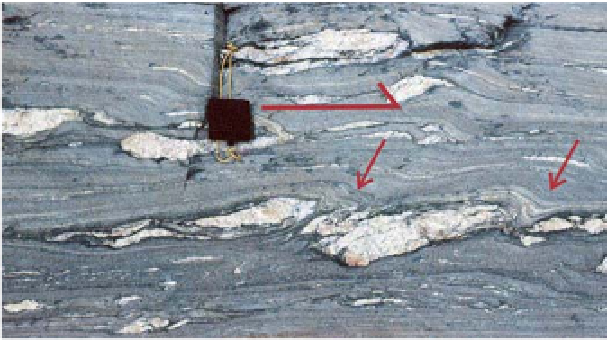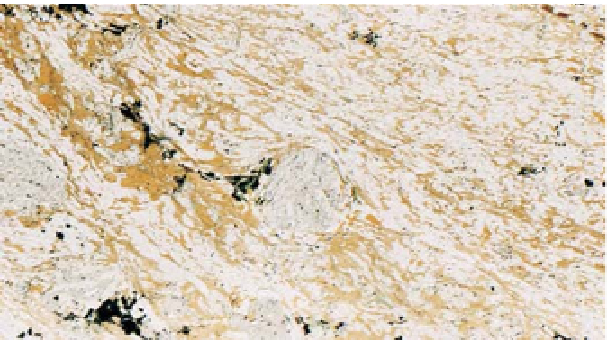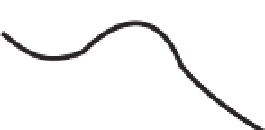Geology Reference
In-Depth Information
the same deformation. In progressive
shear strain, the XY strain plane (in this
case the S foliation) is oblique to the
shear direction and gradually rotates
towards it (e.g.
see
Figure 4.5E). Minor
shears parallel to the shear direction
(the C planes) will thus cut and dis-
place the S planes with the same shear
sense as that of the main shear zone.
known as
synthetic shears
. However,
there is often a second set of subsidiary
shears that display the opposite sense
of shear; these are known as
antithetic
shears
(Figure 7.4C). The latter form at
a high angle to the main foliation and
rotate as the deformation progresses. As
Figure 7.4C shows, to enable the rota-
tion to take place, the sense of shear
has to be in the opposite sense to the
main shear zone. This process can be
easily demonstrated by arranging a pile
of topics such that each topic is verti-
cal, as on a bookshelf, then moving the
tops of the topics to the left or right to
simulate a shear zone; as the individual
topics rotate, the shear sense between
them is opposite to that of the shear
along their tops. Antithetic shears
frequently form along pre-existing
discontinuities that cut across the
main fabric, such as dykes or veins.
Sigmas, deltas and rotated
porphyroblasts
Objects such as
porphyroblasts
con-
tained within the schistosity in a shear
zone often exhibit an asymmetry that
Synthetic and antithetic shears
As we have seen, the C planes in S-C
structure display the same sense of
shear as the main shear zone, and are
Figure 7.5
Asymmetric fabrics and shear sense.
A.
Asymmetric shear folds (see red arrows) indicate dextral shear in highly strained gneiss.
B.
S-C structure in schistose gneiss; the sinistral C shears are inclined to the left at an acute angle to the main schistosity.
C.
Sigma structure formed by
sheared magnetite crystals (see red arrow) in mylonite.
D.
Rotated internal fabric (red line) in garnet porphyroblast in mylonitic biotite schist.
Scale:
the
lens cap on A and C is ~5 cm across; C and D are from thin sections, each 2 cm across.
A
C
B
D
internal
fabric











Search WWH ::

Custom Search